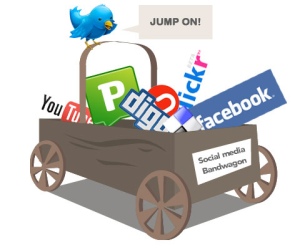 When I was in university, I had an ingenious way of bookmarking important facts/points from articles: 3×5 inch white, lined cards! I would use one side to write out a key point and the reverse side for a citation of the relevant book or journal article. What can I say… it was the 90’s! My 300-odd cards were so valuable to me that whenever anyone wanted to borrow one, I’d watch them like a hawk – till I got it back. Not that I’m averse to sharing, but the time and energy spent bookmarking key points, and the fact that I was relying heavily on them to complete my literature review, made this resource too valuable to lose.
When I was in university, I had an ingenious way of bookmarking important facts/points from articles: 3×5 inch white, lined cards! I would use one side to write out a key point and the reverse side for a citation of the relevant book or journal article. What can I say… it was the 90’s! My 300-odd cards were so valuable to me that whenever anyone wanted to borrow one, I’d watch them like a hawk – till I got it back. Not that I’m averse to sharing, but the time and energy spent bookmarking key points, and the fact that I was relying heavily on them to complete my literature review, made this resource too valuable to lose.
Fast forward to the 21st century, and enter social bookmarking. Filling a niche need for Internet users who navigate their way through websites, social bookmarking is like a little storm in a big teacup – a storm that it is growing bigger everyday.
Some of us may already be saving links to useful websites we visit by ‘adding’ them to our ‘Favorites’ or Bookmarks in our preferred browser. While this means these websites are pegged or bookmarked, the time it takes to retrieve these ‘favorite’ links and the fact that you will need to use your own computer to access the websites, limits this organization tool.
Social bookmarking takes you, the user, to a new level of organizing your precious research, whether it’s a useful restaurant review or a comparison of pathogenic plant viruses. Social bookmarking services such as del.icio.us let you save and store your favorite online resources in a single location that is accessible from any computer with an Internet connection. All you need to do to organize your web links is to assign keywords (tags) that will help you recall the link when you need it. Bookmarks on del.icio.us can be shared publicly, for others to see and add to their resource lists, and vice versa. What a great way to filter through the information overload on the Internet!
How can you within the CGIAR benefit from social bookmarking?
Well, first, online resources can be shared across your Center between scientists and their peers. All that’s needed is a bit of thinking when tagging favorite website links with specific keywords.
As one participant of the Online Social Media workshop put it, “I can see real value in using social bookmarking to create ‘validated’ libraries of information sources on the Web. Choose a topic, set a ‘Network tag’, sign up a bunch of people interested in the topic and away you go. You could post the link to these ‘libraries’ on your own or your organization’s website.”
When you start using network tags, that’s where you really see the power of social bookmarking. Here are some simple instructions provided by Nancy White, online communication expert and lead facilitator at the Online Social Media workshop.
1. Choose a tag. This is a key practice!
2. Recruit Taggers. Here is my rule of thumb. In a group of 20 people, having 2 taggers will make a difference. It doesn’t have to be everyone. Some people are better scanners/taggers than others. I find people who are fast readers and global thinkers make great taggers. First I try and find out if anyone is already using del.icio.us and tagging. Then I ask them to consider tagging for the group as well. I always encourage people to install the little tag bookmarklet on their browser.
I REALLY love it when people don’t just tag, but they add a short annotation of why they think the link is valuable and add other tags beyond the shared tag that help further define the tag.
A tag should be somehow obviously related to the topic. People need to be able to remember it.
If it is related to an event, add a year at the end. So if we wanted to identify the CGSocialmedia resources to this year, we could make the tag CGSocialmedia09
If you need it to be unique to your group, you will have to work harder to make the tag unique. The tag socialmedia is used by many people so it is too generic.
Some caveats: Tags that are too long, have slightly weird spelling or too obtuse tend to have challenges. People forget them, mispell (and thus mistag) them. So bottom line, keep it as simple as you can while still being unique.
3. Make the tag feed visible to users. So this may mean you are recruiting users, or simply making the fruits of the tagging visible to an existing group. You can pull the RSS feed (Meena: coming soon, I promise!) and embed it in a blog or webportal page or any site that allows simple scripts. You can find the RSS feed for any tag at the lower left of that tag page on del.icio.us.
Social bookmarking and scholarly literature
Maybe you don’t use 3×5 inch cards, maybe you’ve been trying various free or licensed software to keep track of your references on your personal computer. How about a web-based application that allows you to do exactly what del.icio.us allows, for your scientific literature, with no more than a mouse-click?
There are too many web-based/social bibliography management tools out there that try to meet the needs of the scientist, created by various sources from esteemed journal publishers to PhD students. I’m going to highlight just three here, namely Connotea, Aigaion and CiteULike. Not for any other reason except that Petr Kosina of CIMMYT sent out a little question on Yammer (see post on Microblogging) asking which of these three online reference management tools would be suitable for geographically distributed research institutions – which would apply to the CGIAR.
A quick scan of Connotea, Aigaion and CiteULike reveals:
- All three software are free: CiteULike and Connotea are hosted services, while Aigaion is a web application that needs to be installed on a server
- You can save and organize your links to references found online
- Your bibliography/list of references can be easily shared among colleagues/peers
- Use any computer to access your list of references anywhere, anytime
- CiteUlike allows you to store your pdf files for easy access from any computer
- Aigaion enables you to export references to other formats, like bibtext
(Updated: Here’s another bibliography management tool, Mendeley, which indexes pdfs and manages bibliography in Word – courtesy of William Gunn)
As you can see, your choice of online reference management software will depend on your needs. Shop around and check out some of the links below that make more detailed comparisons.
If I can sum up the utility of social bookmarking sites, I’d say it’s the wealth of useful links you can get from having access to your colleague’s list and vice versa. Cutting out unnecessary trawling, it is time-saving and leads to the discovery of new, subject-relevant articles. Also having all your useful website links online just makes it easier to shed a few pounds off your travel gear. It’s just one more way to lose your notebook when you travel!
Till next time….
Examples:
Resources:


 some
some  When I was in university, I had an ingenious way of bookmarking important facts/points from articles: 3×5 inch white, lined cards! I would use one side to write out a key point and the reverse side for a citation of the relevant book or journal article. What can I say… it was the 90’s! My 300-odd cards were so valuable to me that whenever anyone wanted to borrow one, I’d watch them like a hawk – till I got it back. Not that I’m averse to sharing, but the time and energy spent bookmarking key points, and the fact that I was relying heavily on them to complete my literature review, made this resource too valuable to lose.
When I was in university, I had an ingenious way of bookmarking important facts/points from articles: 3×5 inch white, lined cards! I would use one side to write out a key point and the reverse side for a citation of the relevant book or journal article. What can I say… it was the 90’s! My 300-odd cards were so valuable to me that whenever anyone wanted to borrow one, I’d watch them like a hawk – till I got it back. Not that I’m averse to sharing, but the time and energy spent bookmarking key points, and the fact that I was relying heavily on them to complete my literature review, made this resource too valuable to lose.